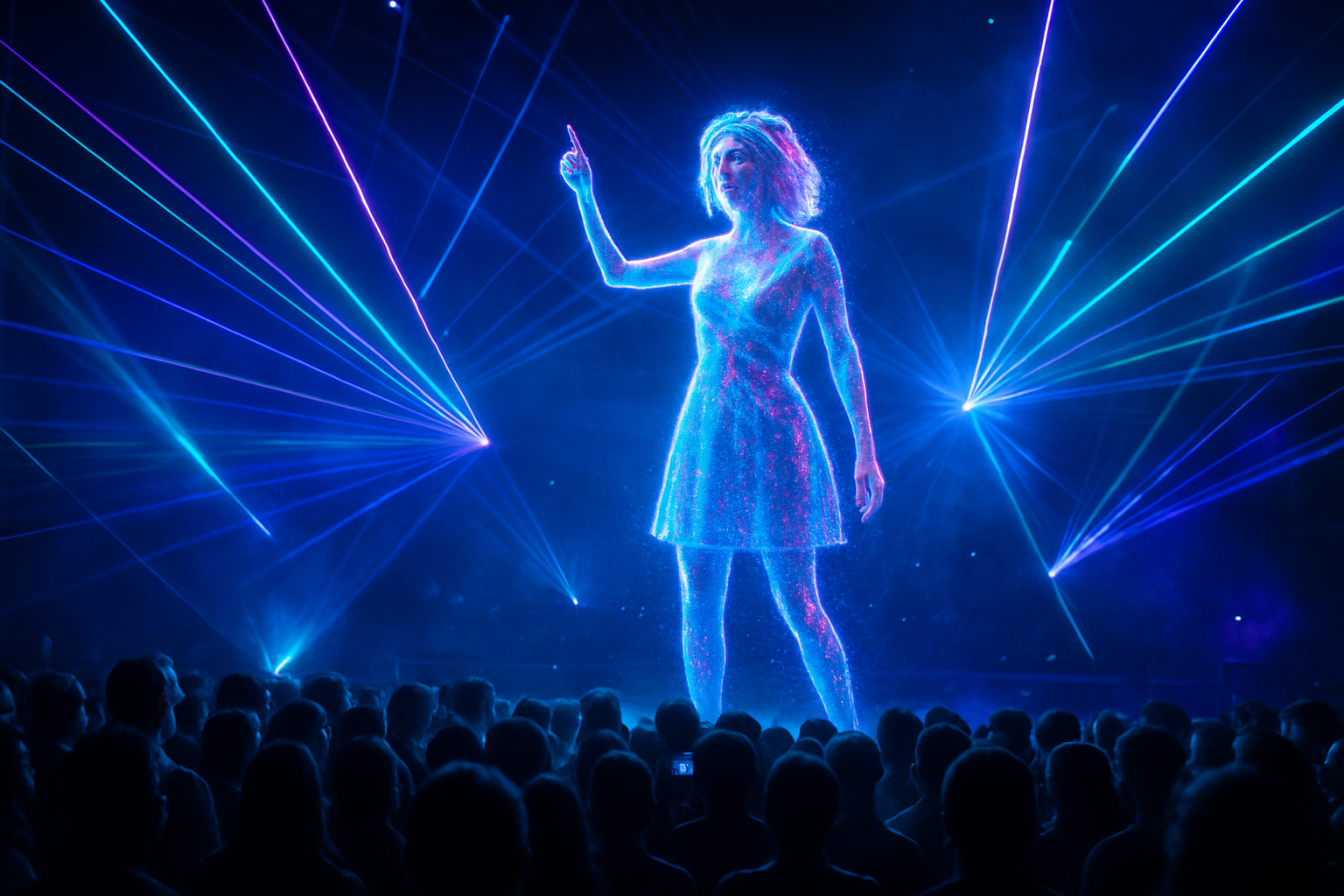Hologram Concerts: Redefining Live Music Experiences
In an era where technology continues to reshape our daily lives, the music industry is experiencing a revolutionary transformation through hologram concerts. This cutting-edge fusion of visual artistry and musical performance is captivating audiences worldwide, blurring the lines between reality and digital illusion. As holographic technology advances, it's not just bringing deceased artists back to the stage, but also opening up new possibilities for living performers to expand their reach and create unforgettable spectacles.

Technological Marvels Behind the Illusion
The creation of a hologram concert is a complex process involving cutting-edge technology. High-definition video projectors, motion capture systems, and advanced computer graphics come together to create a three-dimensional image that appears solid and lifelike. The key lies in the use of a thin, transparent film known as Pepper’s Ghost foil, which reflects the projected image at a precise angle, creating the illusion of a three-dimensional figure on stage. Sound engineers work tirelessly to sync the audio perfectly with the visual performance, ensuring a seamless experience for the audience.
Resurrecting Legends and Creating New Possibilities
One of the most captivating aspects of hologram concerts is the ability to bring legendary performers back to life. From Whitney Houston to Roy Orbison, hologram tours have allowed fans to experience the magic of iconic artists long after their passing. These concerts not only serve as a tribute to the artists’ legacies but also introduce their music to new generations. However, the technology isn’t limited to posthumous performances. Living artists are now exploring hologram concerts as a way to perform in multiple venues simultaneously or to create elaborate, physics-defying stage shows that would be impossible in the physical world.
The Ethics and Controversies Surrounding Digital Resurrection
As with any groundbreaking technology, hologram concerts have sparked intense debate within the music industry and among fans. Critics argue that these digital resurrections exploit the legacies of deceased artists, raising questions about consent and the authenticity of the performance. Supporters, on the other hand, view hologram concerts as a way to celebrate and preserve musical heritage. The legal landscape surrounding these performances is still evolving, with estates and record labels navigating complex copyright issues and performance rights. As the technology becomes more prevalent, society grapples with the ethical implications of digital immortality in the entertainment world.
The Future of Live Music: Holograms and Beyond
The potential for hologram technology in the music industry extends far beyond recreating past performances. Emerging applications include virtual collaborations between artists across different time periods or locations, immersive concert experiences that blend physical and digital elements, and even personalized hologram performances in private settings. As 5G networks and augmented reality technologies advance, we may soon see hologram concerts becoming more accessible and interactive, allowing fans to engage with digital performers in unprecedented ways. The future of live music stands at the intersection of artistry and technology, promising experiences that push the boundaries of imagination and redefine the concept of a concert.




